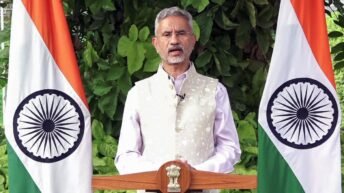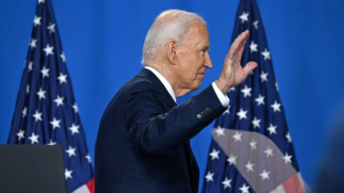|
Listen to article
Getting your Trinity Audio player ready...
|

Most Russian centres of influence and power exertion are on the waterfront. Naberezhnaya is a concrete embankment of a river. Rivers without embankments are often inaccessible for human use. The fluid Indo-Russian technomic relations, like the river Moskva, need a Naberezhnaya.
The state of Russian and Indian States
Russia is at odds with the West, uneasily friendly with China and lacks a national ideology. President Putin skillfully took the gargantuan plane, off a runway that was cracking & ablaze (a la flick ‘2012’) in 2000 and is holding it steady in the air, notwithstanding the headwinds. Alas! The destination is unknown to the passengers.
The transcendental India, in no hurry to be anything, happy-go-lucky, with – “if not in this life, then in next” attitude is being nudged into running, by a leadership, which envisions a busy and bright future for those who are content & happy in an idle and not so bright present. India is an aircraft-carrier, migrating from one ocean to another through the Panama Canal choke. Alas! Most Indians are unclear whether they are entering the choke or exiting it.
Thus, the Russians are suspended in mid-air and the Indians at sea.
Why Science?
Sci-tech is the Indian deck on which to land the Russian plane.
Indo-Russian SWOTs above are evidently complementary. The game of the future will be fought by technology. India lacks material science, while Russia has been traditionally good at it. It has large pools of material expertise. Materials are at the core of all technologies, whether informational (computational) or tangible. We should collaborate in jointly developing quantum computing, 6G, AI, Materials industry etc. Semiconductor Fabs are a national priority in India. Russia on the other hand wants to avoid being wholly dependent on China. Russia, for lack of a sufficient internal market and access to West-dominated global markets, will fail to achieve economies of scale. Thus, close collaboration with Russian science is a worthwhile opportunity to build the semiconductor Fabs & material science industry in India. On the other hand, rare earths, ceramics, metals, bulk crystal growth are well-suited for extraction and production in Russia owing to very low power cost in some regions and ample availability of expertise. Add to it Indian frugal engineering, clever business sense, the down-stream semiconductor Fabs it intends to build, amply available chip design capabilities, burgeoning information technology industry and the two nations can mix a heady cocktail of talent and resources, unbeatable in the world marketplace. Mutual dependence will ensure stability in the partnership.
For Russia, this will mean (i) an ideal insurance policy for its economic and technological independence, (ii) provision of a huge market it needs for sustainable enterprises, (iii) retention of India as an ally through close technomic partnership which will alloy fears of India slipping into pro-western camp and (iv) importantly, it will even ensure that its partnership with China is between equals. Otherwise, Russia (a) will miss technological revolutions in the civilian arena owing to lack of consumers and markets, (b) become a consumer market for Chinese goods and (c) be forced by its pride and security concerns to continue investing mostly in military technology, thereby, coming a full circle to the point where contemporary Russia emerged after the Soviet Union ground to a halt due to the unviability of continuity.
Rather than finding compatible matches in all respective areas of interests, India and Russia should sign an FTA in the aforementioned complementary areas, create an easy mechanism for bilateral IPR filing & acknowledgement & provide free trade status to material science, technology & electronics goods and also sign a bilateral investment protection treaty in material science, chip design & electronics. Russian scientists are excellent partners that we as a Company are intensively engaging with.
Precision tools are best sourced in the West (US, EU) and Japan, science from Russia. Technology is the ‘how’, science the ‘why’. Imported technology without the underlying science is an endless catchup story, stripping one of the capability to enter the next orbit of technology autonomously. On the other hand science (applicative), not culminating into technology for its own purpose does not jive with societal progress. Traditionally, ‘why’ (science) beats ‘how’ (technology) in stimulating Indic minds. In practice, in all such cases where internal development is time-consuming, India should import know-how from the West, but the most profound source of know-why is Russia for the said know-how. Collaborating with Russia in science, accessing technology from the West. Importantly, swiftly learning the why of how through its pool of young thinkers & researchers is ideal for India. Another fount of deep insights is the Russian primary education which though less talked about, is a marvel and could lead to orbit shifting progress in this area where we can catch up.
India’s economy is poised to grow double the size of Russia’s by the end of the ensuing decade. With the economic heft India is poised to build, it is time India and Russia create a fulcrum for the future. While China & the US are busy quarrelling, India & Russia need to catch up. The most promising collaboration for India & Russia lies in the field of material science.
Abundance is the bane of Russia. It is so rich that power flows from exploitation of natural resources, therefore, creativity is undervalued. Since it is a psychosocial phenomenon, realization doesn’t translate into change. India should take advantage of this and invest in Russian science.
For India & Russia to make a common Naberezhnaya of Science, cooperation has to be taken out of the existing, exclusive ambit of Indian science institutes into commerce & business. Reason: Indian scientists working in Government labs are either doing science for the love of it (as seekers of the ‘why’) or as a Government employees (seekers of steady, stable income). The overwhelming majority of Russian scientists take up science because they are internally driven, are capable and scrupulously develop competence. Importantly, they have an urge to grow rich, an attitude that is promoted and not frowned upon. This makes many Russian scientists more enterprising and engaging than the Indian ones.
Russians have been confused about what plate to hang at the door in Smolensk (or Brest) – ‘Entry to Eastern Europe’ or ‘Exit to Asia’. A recent clever approach suggests they engrave “Entry to Eurasia, the bridge to Asia”. Commercial science collaboration amongst Indo-Russian SMEs and large organizations, and investment in Indo-Russian material science companies to establish Fabs in India & crystal growth in Russia will one day lead to hanging a new plate on Russia’s door at Smolensk or Brest “Entry to Indo-Russia”. All that is desired of Russia is to have faith (which Russians lack) and to partner India earnestly without persisting with the elder-brotherly attitude of the Soviet era. Else Indo-Russian technomics will remain restricted to fuel & cannon-supplying transactions on one side and to sponsoring travel and hospitality for each other’s scientists on the other. The rivers shall flow, but without a Naberezhnaya.






Add comment